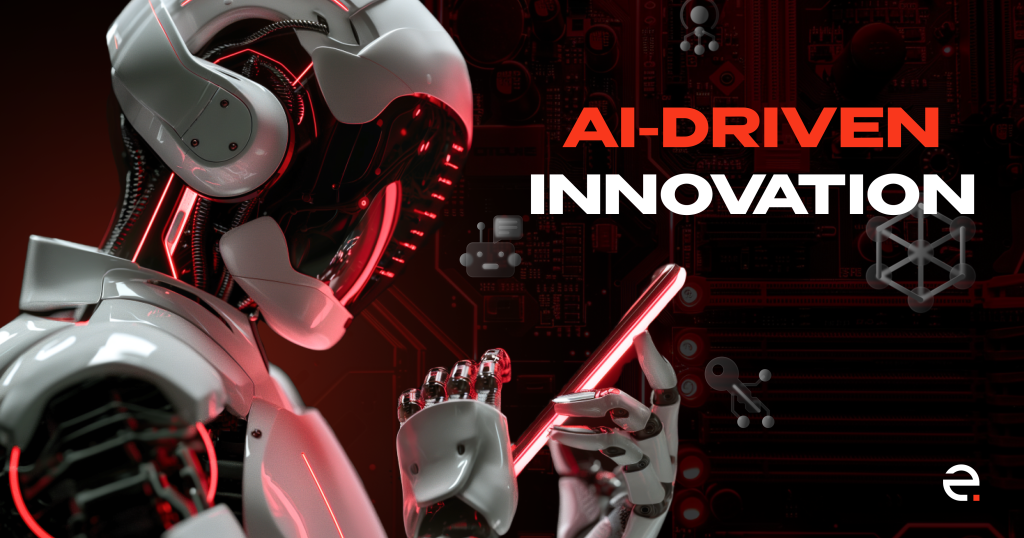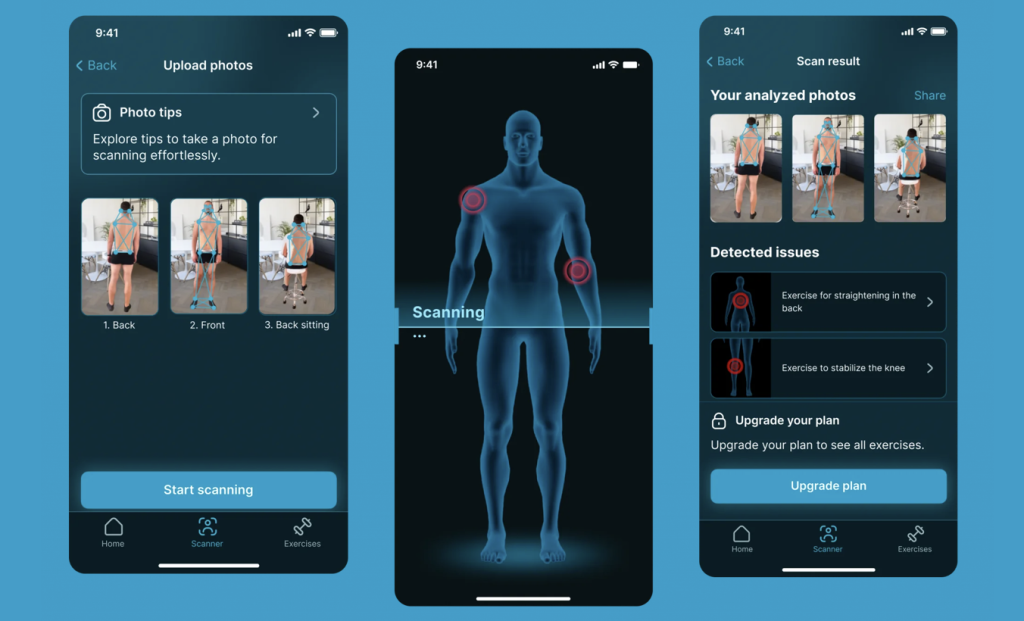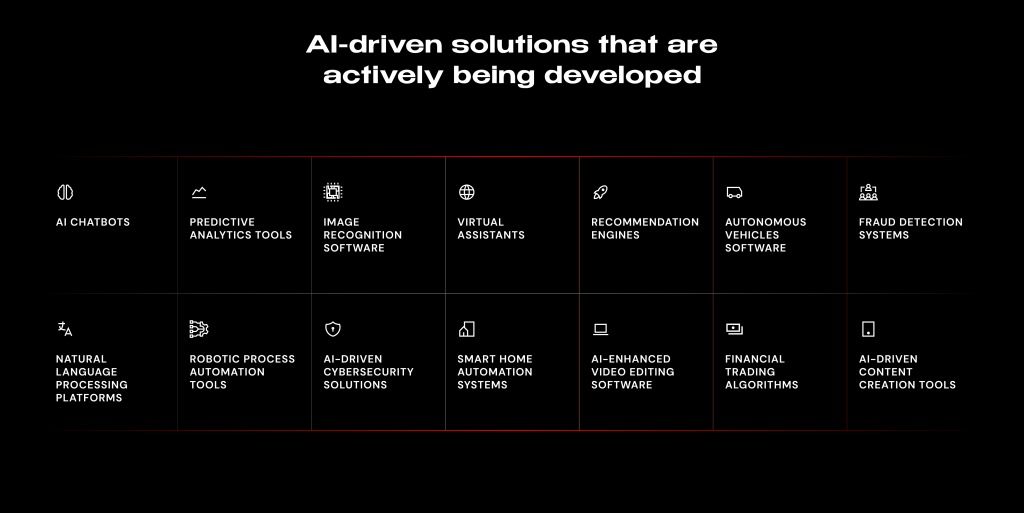AI-driven innovation: What it is and its impact

There is no doubt that, nowadays, AI-driven innovation stands at the forefront, transforming the way businesses operate, compete, and grow. As organizations continue to adopt AI-based technologies, they unlock unprecedented opportunities for creativity and idea generation. The capabilities of AI extend beyond mere task automation: with its help, our world has already got solutions that were once thought impossible! In industries ranging from healthcare to finance, the technology is redefining these boundaries of possibility, enabling companies to deliver truly unique products.
What is AI-driven innovation?
Creating something innovative means coming up with a new idea or improving something that already exists. It’s about thinking creatively and finding better ways to solve problems. When you innovate, you’re not just doing things the same old way; you’re making changes that can lead to improvements and advancements. This could be a new product, a better process, or a more efficient way of doing something. AI driven innovation refers to the process of integrating artificial intelligence into this innovation cycle.
Role of AI in innovations
Here, AI acts as a powerful tool that enhances human capabilities. By providing sophisticated analytical tools and predictive models, it enables innovators to tackle challenges that were once deemed insurmountable. AI facilitates the automation of mundane tasks, freeing up valuable resources and time to be redirected toward creative initiatives.
It is worth saying that, for now, AI cannot fully replace humans in this process. It fundamentally relies on analyzing and learning from pre-existing information, which restricts its capability to conceive truly original ideas. Here, AI can complement human creativity. It means that companies can accelerate their development cycles, quickly completing tasks that could take much longer to do manually.

Importance of AI implementation for efficiency and competitiveness
Companies get the ability to optimize their resources and respond swiftly to market demands, which helps them stay ahead of the curve. Here are just a few examples:
- In healthcare, it is used for predictive analytics to anticipate outcomes.
- In finance, it aids in fraud detection and risk assessment.
- In the insurance sector, it allows faster claims processing and proper risk evaluation etc.
Benefits of AI-driven innovation
Of course, one of the most significant benefits of AI driven innovation is its ability to enhance decision-making processes. Data needed for the research is analyzed quickly and accurately. It helps organizations make decisions faster and generate ideas more effectively. Other benefits here include:
Increased Productivity
The technology helps organizations automate repetitive and time-consuming tasks. Plus, it also helps reduce human errors that may greatly affect the end result.
Cost Efficiency
By optimizing operations and reducing the need for manual intervention, AI helps businesses achieve remarkable cost savings. AI systems can identify inefficiencies in daily processes and suggest improvements that lower operational costs.
Faster Time-to-Market
By using AI to simulate and test new ideas rapidly, companies can bring innovative products to market faster than ever before. The pharmaceutical industry, for example, leverages the technology to speed up drug discovery and clinical trials, reducing the time needed to develop new medications.
Key Trends in AI
Machine Learning Automation
Automated machine learning (AutoML) is simplifying the process of creating and deploying machine learning models. This trend democratizes artificial intelligence, allowing businesses without extensive technical expertise to leverage complex algorithms for strategic planning.
Natural Language Processing
NLP is revolutionizing human-machine interactions by enabling computers to understand and process human language more naturally. This trend is evident in the rise of virtual assistants and chatbots that provide customer support.

Edge AI
Edge AI involves processing data locally on devices, reducing the latency and bandwidth required for cloud-based analytics. This trend is critical for the Internet of Things (IoT), enabling real-time data processing and decision-making. It supports applications ranging from smart home devices to autonomous vehicles.
Sustainable AI
As environmental concerns grow, sustainable artificial intelligence is emerging as a priority. It is being used to develop energy-efficient technologies and reduce carbon footprints. Companies are integrating the technology into sustainability initiatives, optimizing resource usage and minimizing waste.
AI in Various Industries
Healthcare
Thanks to the technology, medical facilities are improving diagnostics and patient care. Specialists use AI-powered imaging tools for early disease detection. Predictive analytics platforms help manage patient flow and hospital resources. AI-powered robotic systems enhance the precision and control of surgical procedures. Artificial intelligence also accelerates the drug discovery process.
Finance
The technology is enhancing fraud detection and risk management. Robo-advisors provide personalized investment advice, while AI-driven credit scoring models offer more accurate assessments of creditworthiness. Additionally, AI is streamlining regulatory compliance and reporting.
Retail
Personalized shopping experiences are created through AI-driven recommendation engines and targeted marketing campaigns. The technology also optimizes inventory management and demand forecasting.
Manufacturing
Predictive maintenance anticipates equipment failures before they occur. AI-driven robots are used for tasks like assembly and packaging. Additionally, algorithms optimize supply chain logistics, ensuring timely delivery and reducing costs.
Benefits of implementing AI for enterprises
Enterprises and large corporations are also turning to artificial intelligence to sustain their competitive edge and automate daily workflows, achieving:
Enhanced Decision-Making
For instance, JPMorgan Chase utilizes AI algorithms to analyze financial transactions, helping to identify patterns and trends.
Improved Customer Experience
Amazon uses the technology to power its recommendation engines, which analyze customer behavior to suggest certain products.

Cost Reduction
Vodafone employs chatbots to handle customer queries, effectively reducing the workload on human agents and cutting down support expenses. This automation also speeds up response times!

Risk Management
Managing risk is critical for any large corporation! For instance, IBM’s Watson is used in the insurance industry to assess risks more accurately by analyzing historical data, from existing claims to weather patterns!
AI-Driven Software Development

How Ein-des-ein creates customized solutions using artificial intelligence
EDE team keeps pushing the boundaries of innovation, crafting AI-based software that sets new standards for efficiency and functionality.
We utilize ML algorithms, smart image analysis and NLP to build intelligent systems capable of learning and adapting over time. Our development process is rooted in agile methodologies, allowing us to remain flexible and responsive to changing client needs while maintaining a focus on delivering high-quality outcomes.
Ready to push the limits of what is possible? Partner with Ein-des-ein to create an exceptional solution that is both innovative and effective!
FAQ
-
Provide examples of AI-based innovative solutions Ein-des-ein developed.
-
Ein-des-ein has a proven track record of successful projects across diverse industries here. One notable example is our work with a leading healthcare professional, where we developed an AI-powered tool that analyzes user images and identifies posture issues with greater accuracy.
Here, we implemented a sophisticated image recognition system that identified subtle posture irregularities. The algorithm compared user posture against ideal standards. Then, the system offered personalized exercise recommendations based on individual posture assessments. We added a scheduling feature that reminded users to perform their recommended exercises regularly. EDE specialists incorporated a feature that tracked user progress over time. It provided detailed analytics on posture improvements. A gamification system motivated users, rewarding them for consistent exercise completion.
EDE team also developed an innovative AI-based platform designed to summarize articles with remarkable efficiency. We added advanced natural language processing algorithms to accurately condense long articles into concise summaries. Our engineers ensured the platform could handle various topics, maintaining the essence and key points of each document. We added real-time processing capabilities, allowing users to receive summaries almost instantaneously. We incorporated a feature that allowed users to customize the length of the summaries according to their needs. Our developers included a robust database to store and manage both original articles and their summaries securely.
Our team also developed a smart application designed to revolutionize fleet management with unparalleled efficiency. We implemented a real-time tracking system that monitored vehicle locations and movements accurately. Our engineers integrated predictive analytics to forecast maintenance needs, reducing unexpected breakdowns. We also added a route optimization feature. It minimized travel time and fuel consumption. A robust reporting tool generated detailed analytics on fleet performance. -
What other modern technologies does your company implement?
-
EDE once worked on an innovative IoT solution for smart homes. We implemented a seamless integration system that connected various smart home devices into one unified platform. A real-time monitoring feature allowed homeowners to track energy consumption and optimize usage. An automated lighting system adapted to personal preferences and schedules. Our application also incorporated a smart security feature. It notified homeowners of suspicious activities with instant alerts. A climate control system adjusted heating and cooling based on current weather data. We also integrated voice command capabilities i.e. hands-free control over all connected devices.
EDE also crafted an advanced real estate platform equipped with cutting-edge AR and VR capabilities. Here, we integrated immersive virtual tours. It allowed potential buyers to explore properties in a 3D environment from anywhere in the world. Our developers implemented augmented reality features that enabled users to visualize furniture and decor in real-time within the listed properties. A dynamic property listing interface provided detailed information and high-resolution images.
The platform featured a sophisticated search and filter system. Potential buyers could find properties that precisely matched their criteria. We added a virtual staging tool. It helped sellers showcase their properties with various styles and layouts. Our developers also incorporated a booking system for scheduling property visits and consultations directly through the platform.